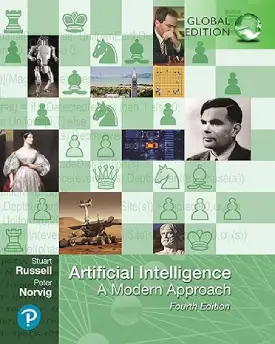What is Federated Learning in Machine Learning?
Our team explores the concept of federated learning in ML. Therefore, let’s dive into the question of what is federated learning in machine learning.
Table of Contents:
Machine learning becomes more integrated into our daily lives with every year. It is powering voice assistants, personalising recommendations, and enabling autonomous vehicles. The amount of data generated by users is growing exponentially as well. Traditionally, this data is collected and sent to centralised servers where models are trained. However, concerns over privacy, security, and data governance have led to the development of new learning paradigms. One such paradigm is federated learning (FL).
Federated learning represents a significant shift from traditional machine learning techniques by enabling model training across decentralised devices or servers holding local data samples, without exchanging them. Instead of sending data to the model, federated learning brings the model to the data.
This article explores what federated learning is, how it works, its benefits, challenges, use cases, and its potential role in the future of artificial intelligence.
What is Federated Learning?
Federated Learning (FL) is a distributed machine learning technique where multiple clients (such as mobile phones, hospitals, or banks) collaboratively train a shared model under the orchestration of a central server, while keeping the training data decentralised. This technique was first introduced by researchers at Google in 2016 to enhance data privacy and security on Android devices.
Unlike traditional centralised learning methods where data is collected and aggregated on a central server for training, federated learning allows each device or participant to keep the data locally. The central server only receives model updates, typically gradients or weights, which are aggregated to improve the shared global model.

How Does Federated Learning Work?
The typical workflow of federated learning involves five different steps. Let’s explore them below.
- Initialisation:
- The central server initialises a global model and distributes it to participating clients (devices or organisations).
- Local Training:
- Each client trains the model locally using its own data for one or more epochs. This is often done using stochastic gradient descent (SGD) or a variant.
- Update Transmission:
- After training, clients send only the model updates (such as weight deltas or gradients) to the central server, not the raw data.
- Aggregation:
- The central server aggregates these updates using algorithms like Federated Averaging (FedAvg) to update the global model.
- Iteration:
- The updated model is then sent back to the clients, and the process repeats for several rounds until convergence.
This process ensures that the client data never leaves the local environment, preserving privacy.
Key Characteristics FL
- Decentralised Data
Data remains on user devices or within an organisation’s secure environment. Only model updates are shared.
- Privacy and Security
Federated learning inherently protects data privacy by design. Techniques such as differential privacy, secure multiparty computation, and homomorphic encryption are often employed to enhance security further.
- Heterogeneity
Data across clients may not be independent and identically distributed (non-IID), and client devices may vary significantly in computation power and availability.
- Communication Efficiency
Communication between the server and clients is a bottleneck. FL systems use compression and sparsification techniques to reduce the communication overhead.
Types of Federated Learning
Federated learning can be categorised based on the data distribution across clients. There are three main types of learning: horizontal federated learning, vertical federated learning, and federated transfer learning.
Horizontal Federated Learning
Clients share the same feature space but different samples. For instance, two hospitals in different regions collecting the same kind of patient data.
Vertical Federated Learning
Clients share the same data samples but different features. For example, a bank and an e-commerce platform might have different types of information about the same customers.
Federated Transfer Learning
When clients have different data samples and different features, transfer learning techniques can apply to bridge the gaps in the model training process.
Benefits of Federated Learning
Data Privacy and Compliance – since data never leaves local devices or environments, FL complies better with data protection regulations like GDPR, HIPAA, and CCPA.
Improved Personalisation – models can be trained on device-specific data, enabling more personalised experiences, such as more relevant keyboard suggestions or recommendations.
Reduced Latency – local model training allows for real-time decision-making without needing constant cloud connectivity.
Cost Efficiency – by reducing the need to transmit and store large volumes of data in centralised servers, FL lowers cloud storage and network costs.
Challenges in FL
Despite its advantages, federated learning faces several challenges. We explore some of them below.
1. Non-IID Data
Data heterogeneity across clients makes model convergence and performance consistency more complex compared to centralised models.
2. Communication Overhead
Transmitting model updates repeatedly can lead to significant bandwidth consumption, especially with large models or frequent updates.
3. Client Availability
Not all clients may be available at all times. Handling dropout and ensuring robustness are key challenges.
4. Security Vulnerabilities
Although data isn’t shared, model updates can still leak sensitive information. FL systems must be protected against attacks like model inversion, data poisoning, and backdoor attacks.
5. System Heterogeneity
Devices participating in FL may vary greatly in terms of memory, compute power, and battery life. Orchestration must account for these differences.
Applications of FL
Various industries where data privacy and security are paramount explore and adopt federated learning.
Healthcare
Hospitals can collaboratively train models to detect diseases or suggest treatments without exposing patient records. FL allows learning from diverse datasets across institutions, improving model generalisation.
Finance
Banks and financial institutions can use FL for fraud detection, credit scoring, and customer segmentation while maintaining compliance with strict privacy regulations.
Mobile Devices
FL is already in use in applications like Google Gboard, which learns user typing habits locally to improve suggestions without uploading keystrokes.
Smart Homes and IoT
Federated learning allows smart devices to personalise their behavior without sharing sensitive usage patterns or environmental data with cloud servers.
Autonomous Vehicles
Cars can use FL to learn from driving experiences locally, sharing insights (but not raw sensor data) to improve shared models for navigation and safety.
Future of Federated Learning
Federated learning is still an evolving field, with active research and development aiming to overcome its current limitations.
- Federated Reinforcement Learning: Applying FL in reinforcement learning settings, such as robotics and autonomous systems.
- Hybrid Approaches: Combining FL with other privacy-preserving techniques like differential privacy and secure enclaves.
- Edge AI Integration: As edge computing grows, FL will be key to enabling intelligent applications on-device without relying on the cloud.
- Regulatory Standardisation: As FL becomes more common, there will be a need for standardised frameworks and legal guidance for its deployment.
Organisations like the OpenFL (Open Federated Learning) initiative and TensorFlow Federated are paving the way for open-source frameworks that make FL more accessible and scalable.
The Bottom Line
Federated learning marks a paradigm shift in how machine learning models train. By keeping data decentralised and secure while enabling collaborative learning, it addresses some of the most pressing challenges in modern AI privacy, security, and compliance.
Though it introduces new complexities, its potential to empower personalised, secure, and ethical AI systems is enormous. As tools, infrastructure, and standards mature, federated learning will likely become a cornerstone technology in the next wave of intelligent systems, especially in privacy-critical industries like healthcare, finance, and mobile computing.





